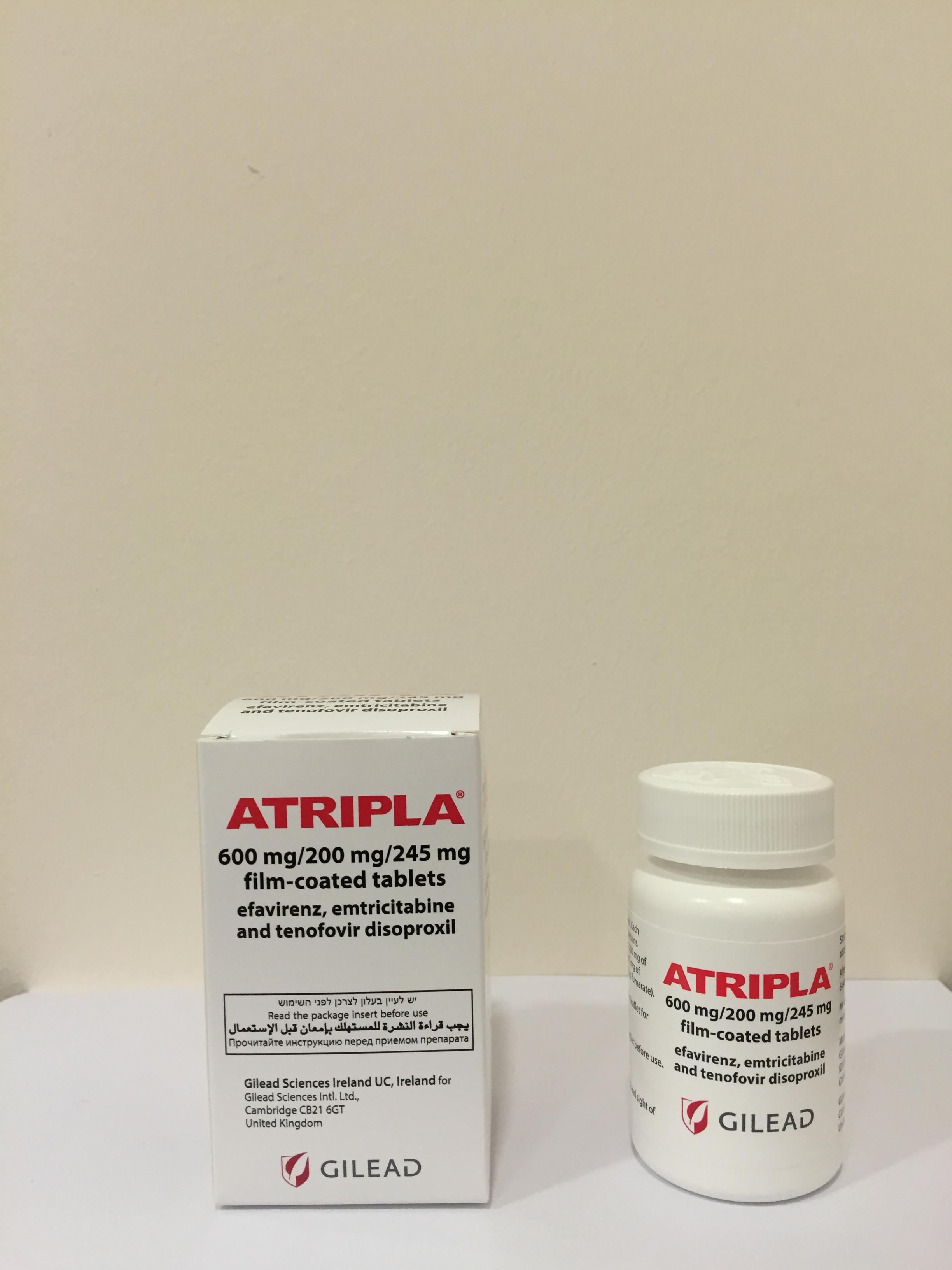Quest for the right Drug

אטריפלה ATRIPLA (EFAVIRENZ, EMTRICITABINE, TENOFOVIR DISOPROXIL AS)
תרופה במרשם
תרופה בסל
נרקוטיקה
ציטוטוקסיקה
צורת מתן:
פומי : PER OS
צורת מינון:
טבליות מצופות פילם : FILM COATED TABLETS
עלון לרופא
מינוניםPosology התוויות
Indications תופעות לוואי
Adverse reactions התוויות נגד
Contraindications אינטראקציות
Interactions מינון יתר
Overdose הריון/הנקה
Pregnancy & Lactation אוכלוסיות מיוחדות
Special populations תכונות פרמקולוגיות
Pharmacological properties מידע רוקחי
Pharmaceutical particulars אזהרת שימוש
Special Warning עלון לרופא
Physicians Leaflet
Contraindications : התוויות נגד
4.3 Contraindications Hypersensitivity to the active substances or to any of the excipients listed in section 6.1. Severe hepatic impairment (CPT, Class C) (see section 5.2). Co-administration with terfenadine, astemizole, cisapride, midazolam, triazolam, pimozide, bepridil, or ergot alkaloids (for example, ergotamine, dihydroergotamine, ergonovine, and methylergonovine). Competition for cytochrome P450 (CYP) 3A4 by efavirenz could result in inhibition of metabolism and create the potential for serious and/or life-threatening adverse reactions (for example, cardiac arrhythmias, prolonged sedation or respiratory depression) (see section 4.5). Co-administration with elbasvir/grazoprevir due to the expected significant decreases in plasma concentrations of elbasvir and grazoprevir. This effect is due to induction of CYP3A4 or P-gp by efavirenz and may result in loss of therapeutic effect of elbasvir/grazoprevir (see section 4.5). Co-administration with voriconazole. Efavirenz significantly decreases voriconazole plasma concentrations while voriconazole also significantly increases efavirenz plasma concentrations. Since Atripla is a fixed-dose combination product, the dose of efavirenz cannot be altered (see section 4.5). Co-administration with herbal preparations containing St. John’s wort (Hypericum perforatum) due to the risk of decreased plasma concentrations and reduced clinical effects of efavirenz (see section 4.5). Administration to patients with: - a family history of sudden death or of congenital prolongation of the QTc interval on electrocardiograms, or with any other clinical condition known to prolong the QTc interval. - a history of symptomatic cardiac arrhythmias or with clinically relevant bradycardia or with congestive cardiac failure accompanied by reduced left ventricle ejection fraction. - severe disturbances of electrolyte balance e.g. hypokalemia or hypomagnesemia. Co-administration with drugs that are known to prolong the QTc interval (proarrhythmic). - These drugs include:antiarrhythmics of classes IA and III, - neuroleptics, antidepressive agents, - certain antibiotics including some agents of the following classes: macrolides, fluoroquinolones, imidazole and triazole antifungal agents, - certain non-sedating antihistamines (terfenadine, astemizole), - cisapride, - flecainide, - certain antimalarials, - methadone (see sections 4.4, 4.5 and 5.1).

פרטי מסגרת הכללה בסל
א. התרופה האמורה תינתן לטיפול בנשאי HIVב. מתן התרופה ייעשה לפי מרשם של מנהל מרפאה לטיפול באיידס, במוסד רפואי שהמנהל הכיר בו כמרכז AIDS.ג. משטר הטיפול בתרופה יהיה כפוף להנחיות המנהל, כפי שיעודכנו מזמן לזמן על פי המידע העדכני בתחום הטיפול במחלה.
מסגרת הכללה בסל
התוויות הכלולות במסגרת הסל
| התוויה | תאריך הכללה | תחום קליני | Class Effect | מצב מחלה |
|---|---|---|---|---|
| . התרופה האמורה תינתן לטיפול בנשאי HIV | 10/01/2012 |
שימוש לפי פנקס קופ''ח כללית 1994
לא צוין
תאריך הכללה מקורי בסל
10/01/2012
הגבלות
תרופה מוגבלת לרישום ע'י רופא מומחה או הגבלה אחרת
מידע נוסף
